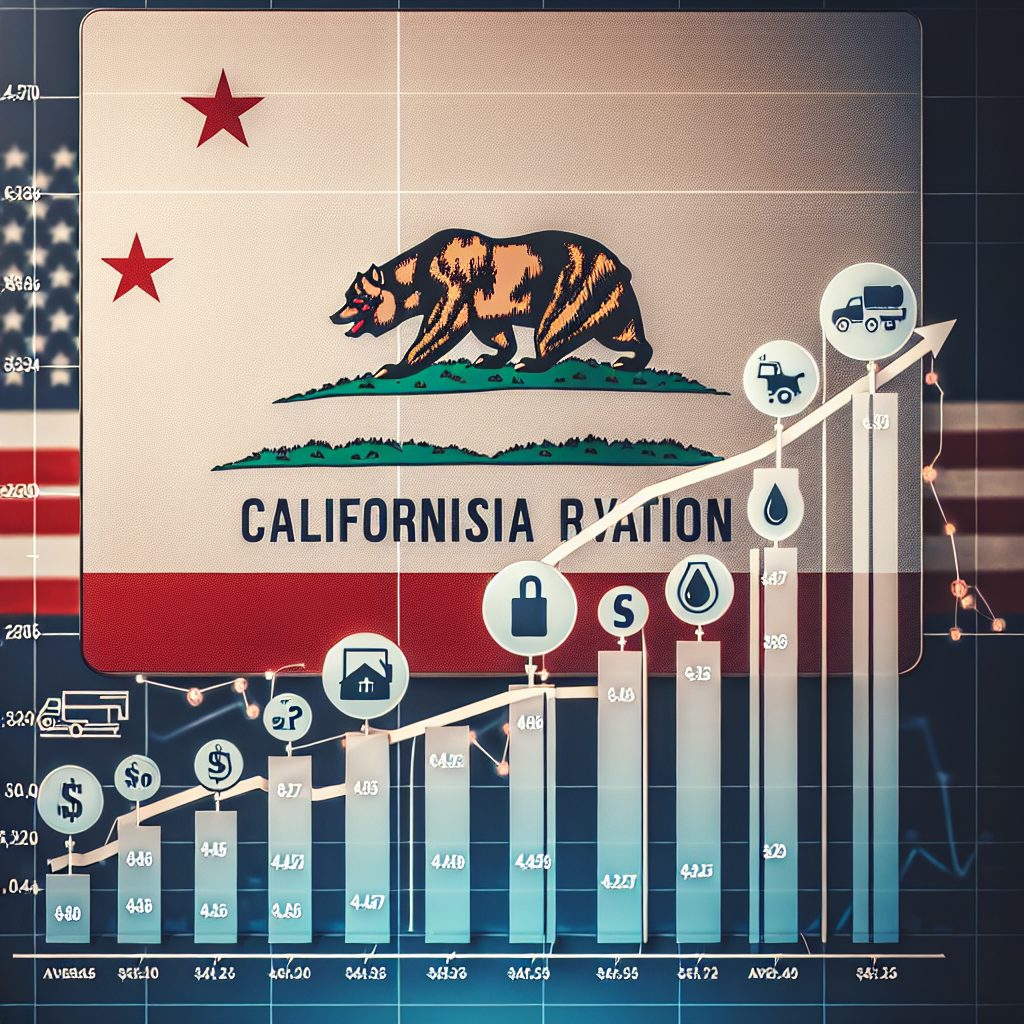California Leads the Nation in tax, regulation, and oil prices. According to data from GasBuddy and AAA, as of mid-May 2025, the average gas price in California stands at $4.85 per gallon, significantly higher than the national average of $3.26.
And the situation is only getting worse. A study conducted by Michael Mische, a professor at the University of Southern California, in March 2025 predicted that fuel prices in California could skyrocket by 75% in the next year, reaching over $8 per gallon. This is not an exaggeration – unless policymakers change course, this is the future price trend.
Who is to blame? It’s not about oil companies or global demand, but rather decades of state-level taxation, excessive regulation, and misleading climate regulations that have distorted California’s gasoline market. This is a man-made problem, a classic example of government failure, not market failure.
According to data from the US Energy Information Administration, oil prices are typically determined by five factors: crude oil prices, refining costs, distribution and marketing, taxes, and regulations. In California, just taxes and regulatory costs exceed $1.30 per gallon, nearly double the national average.
California has the highest gasoline tax in the nation at $0.678 per gallon, not including additional fees and environmental surcharges. Coupled with the Cap-and-Trade program, Low Carbon Fuel Standard (LCFS), and special blended fuels mandated only in California, it’s easy to understand why California residents are paying higher gas prices.
The situation is expected to worsen further. Mische’s study warns that due to the unfriendly approval process caused by California’s climate regulations, coupled with low expected returns, refineries are closing one after another. Even with relatively stable demand, by 2026, California’s fuel supply could decrease by 20%. The reduction in the number of refineries combined with strict fuel standards means supply will tighten even further, leading to price hikes.
To understand how bad California’s policies are, one only needs to look at Texas. As of May 2025, the average gas price in Texas is around $3 per gallon, nearly $2 less than California. Texas levies only $0.20 per gallon in gasoline tax, and its regulatory agencies are streamlined and industry-friendly.
Texas’ refineries are not constrained by California’s carbon credit system and are not compelled to produce costly special blended fuels. By allowing a more competitive and open fuel market, Texas enjoys lower wholesale prices and more efficient distribution, a stark and insightful difference.
Supporters of California’s policies argue that high gas prices are a necessary cost to combat climate change. But what if those policies fail to deliver?
California has seen a decrease in greenhouse gas emissions, primarily from cleaner electricity production, not gasoline policies. Meanwhile, low-income and working-class Californians are impacted by rising gas prices as they often drive older, less fuel-efficient vehicles.
This is akin to a regressive tax, hurting the very people politicians claim to protect. Moreover, these regulations do not reduce global emissions but rather shift energy production and refining industries from the state to overseas, often to countries with lower environmental standards.
In my academic research, including a peer-reviewed paper and subsequent studies, I have documented how the fragmentation of California’s state-level fuel market through taxes, environmental projects, and infrastructure restrictions leads to costly inefficiencies that drive up prices.
These policies hinder new investments in refining and fuel transport, create artificial shortages, and increase transaction costs ultimately borne by consumers.
In short, California’s model is a classic example of how excessive regulation and government micromanagement can disrupt affordability without corresponding benefits.
The solution is not more subsidies or “green” credits, nor is it banning fuel cars or limiting vehicle miles traveled. The solution lies in embracing free-market capitalism and the principles advocated by Milton Friedman: let prices reflect market conditions, not bureaucratic preferences.
This means:
– Abolishing California’s Cap-and-Trade and Low Carbon Fuel Standard programs.
– Aligning fuel blending standards with nationally recognized standards.
– Halting plans to increase gasoline taxes under current law.
– Encouraging private investment in refining and fuel infrastructure.
The federal government can help by streamlining approval processes for interstate fuel pipelines and reevaluating federal environmental regulations that overlap or exacerbate state laws. But real change must come from the state government.
California’s high gas prices are not the result of global market fluctuations or greedy corporations. They are the outcome of a series of deliberate policy choices that have made fuel production, transport, and affordability more difficult.
When the government picks winners and losers in the energy market, consumers bear the consequences. When politicians mistake control for ability, the systems they create serve ideology rather than reality.
It’s time to discard the fallacy that “high gas prices are the cost of progress.” California has manufactured an artificial fuel crisis, and only reforms based on free-market principles can address this issue.

